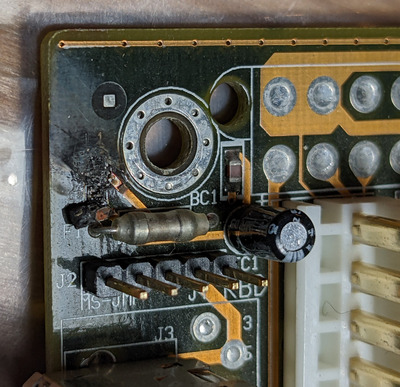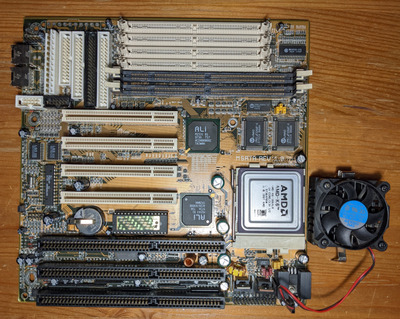First post, by subnet_zero
- Rank
- Newbie
hi, I totally forgot about this M5ATA board in the basement. It has the L1 inductor(?) blown, next to the AT power connector an the fuse F1. First, It seems the damage was done because someone put in the AT power plug the wrong way round.
But then I poked around an the connection goes to PIN 4 of the PS/2 connector. Pin 4 is +5VDC output. Maybe this was blown because something draws to much power?
From pictures in the web, this was an SMD inductor. If anyone knows what value this inductor had, it would be great. I have not much hope, because regular multimeter an not measure Henry.
I'm thinking of repairing this board by bridging this inductor and go without it. What do you think? (I know a circuit diagram would be better, I will figure out the connection of the different parts later.)

